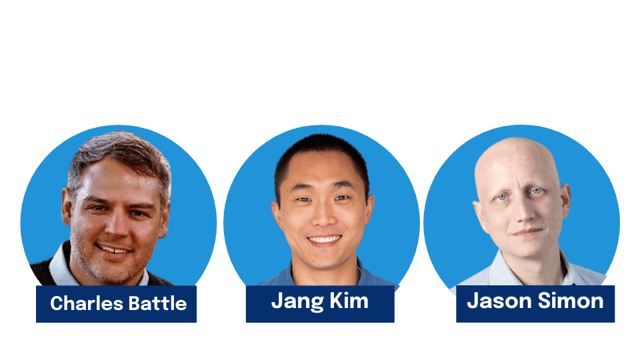Thinking Big is Product Management

Charles Battle, Senior Director of Product Management, Jang Kim, VP of Product Management, and Jason Simon, VP of Product Management, discuss how they re-envisioned an existing LendingTree product to meet the evolving needs of their customers and disrupt a competitive market.
MyLendingTree began as a free credit score and report product. But consumers who use the app now see a much more robust financial intelligence platform. Charles, Jang, and Jason, alongside the rest of the product team at LendingTree, are responsible for this product evolution.
In the eyes of many at the organization, LendingTree was already a successful product and didn’t need to shift. But with this iteration, the product team was anticipating the market’s needs.
“It seems like every credit card company now offers a free credit score and report,” says Charles, Senior Director of Product Management. “And we knew we had to do something drastically different if we were going to separate ourselves from competitors.”
They made the bold decision to build a more diversified product offering that would ultimately attract more users, foster deeper engagement, and better serve their users. Through focus groups and user research, they learned that MyLendingTree lacked a complete picture of a consumer’s overall financial health. They identified three components of value to consumers: credit scores, which represent their financial past, cash flow, their financial present, and savings, their financial future.
Concept testing and prototyping helped them learn what features would resonate with users. “If you hold our competitors’ apps up and you hold up our prototype, it should be obvious to users that ours is a more complete solution,” says Jason Simon, VP of Product Management. “We did a blind study and stripped out all of the branding and got honest feedback from users.”
Jason, Jang, and Charles frame user research and consumer feedback as both a validation tool and proof point they can bring back to internal teams. “Having that validation from users is invaluable to building that confidence to be able to evangelize this across the company and support what we’re working on building,” says Jason.
When approaching stakeholders with new and experimental ideas, all offered three distinct but useful pieces of advice for getting people comfortable with taking risks. Jang says that what you’re capable of may depend on company size and maturity, but when selling your idea, be clear about the intent behind the project. Jason stresses the importance of being passionate and making sure you’ve done your homework before putting an idea in front of executives or senior stakeholders. And Charles notes that it’s important to balance the big picture with small enhancements.
In this episode, you’ll learn a lot about product strategy, experimentation, and time management.
Here are the highlights:
- LendingTree’s strategy behind evolving an existing product (2:09)
- Using user research tactics to test new product and feature ideas (6:54)
- The right way to rally stakeholders around a new product vision (10:14)
- How you can carve out time to think big (16:28)
- Ways to approach go-to-market and post-launch plans (22:49)

Subscribe now!
Get our new reports, case studies, podcasts, articles and events

.png?width=80&name=Untitled%20design%20(1).png)